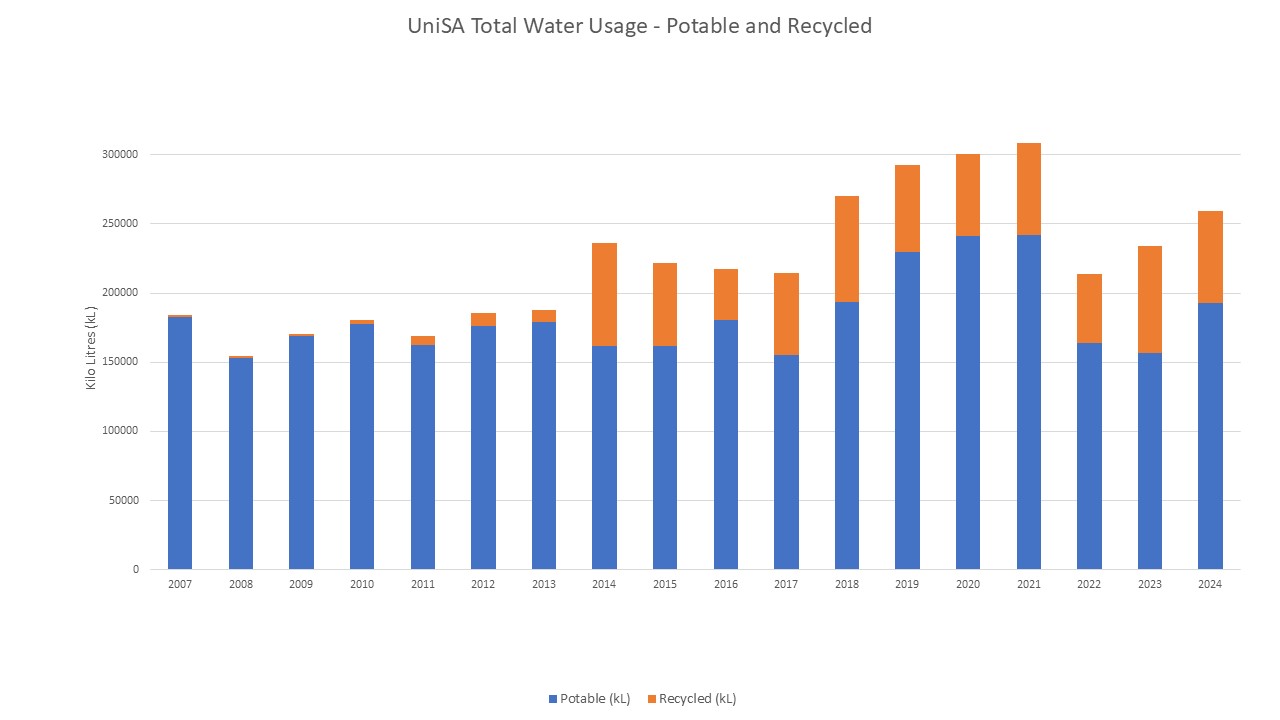Water consumption programs implemented since 2002 have significantly reduced our annual consumption of potable water, reducing our reliance on the ailing River Murray. As such, UniSA uses three principal sources of water:
All campuses are connected to mains water, supplied by SA Water. The majority of UniSA’s recycled water consumption is for irrigation, with the majority of this is at Mawson Lakes campus - UniSA’s largest campus by site area (63 Ha).

UniSA’s two principal water management strategies are:
Mawson Lakes Campus is connected to two sources of recycled water - SA Water’s Mawson Lakes Recycled Water Scheme and the City of Salisbury’s reWater Scheme.
SA Water’s Scheme supplies recycled water to a ring main around the western portion of the campus. The water is used for irrigation purposes and is connected to all new buildings with toilets pre-plumbed for recycled water.
In 2009 UniSA also connected to the City of Salisbury (COS) reWater scheme with this supply used for irrigating the Mawson Lakes Golf Course and ovals.
UniSA has investigated connecting its new buildings at City West to GAP Water (Glenelg to Adelaide Parklands Recycled Water) , but the cost of connecting to the main line has proven to be prohibitive.
Over the period 2010-2012, the majority of aging high flow water fixtures were replaced with water efficient fixtures.
During 2021-2022 UniSA began converting it's water meters to smart meters to assist in proactively identifying water usage opportunities.
Water consumption figures below include both potable and recycled water.

GFA = Gross Floor Area
*Source: Tertiary Education Facilities Management Association Benchmarking Data
UniSA’s increase in water consumption over the period 2018-2019 is related to two primary factors:
Potable water consumption in 2020 did reduce by 6%.
Total water consumption was significantly reduced in 2022 as a result of the:
Please contact us if you would like more information on individual campus or building water consumption.
Report faults including leaks ASAP via the Maintenance Request online tool.